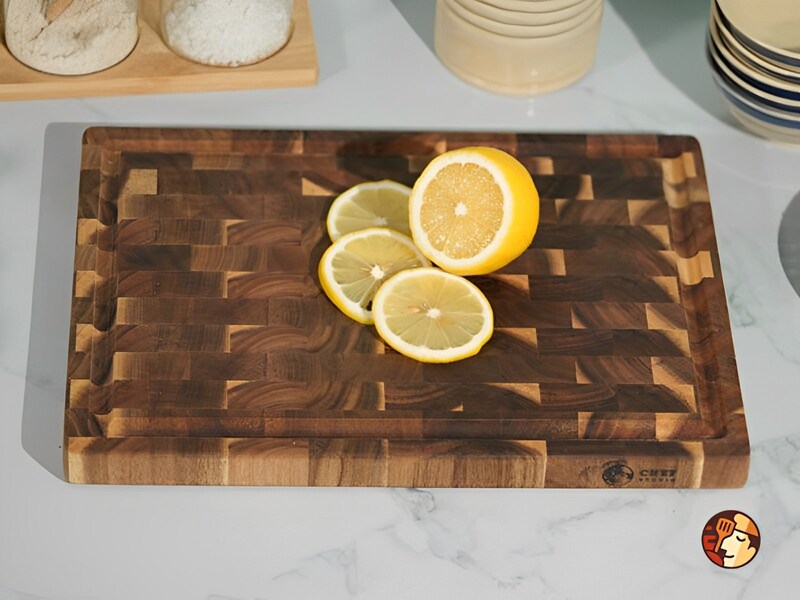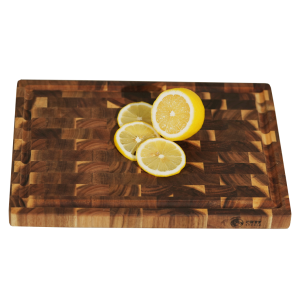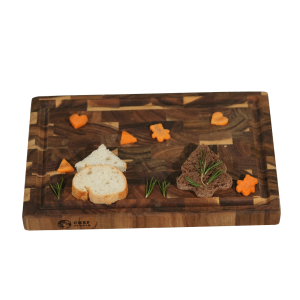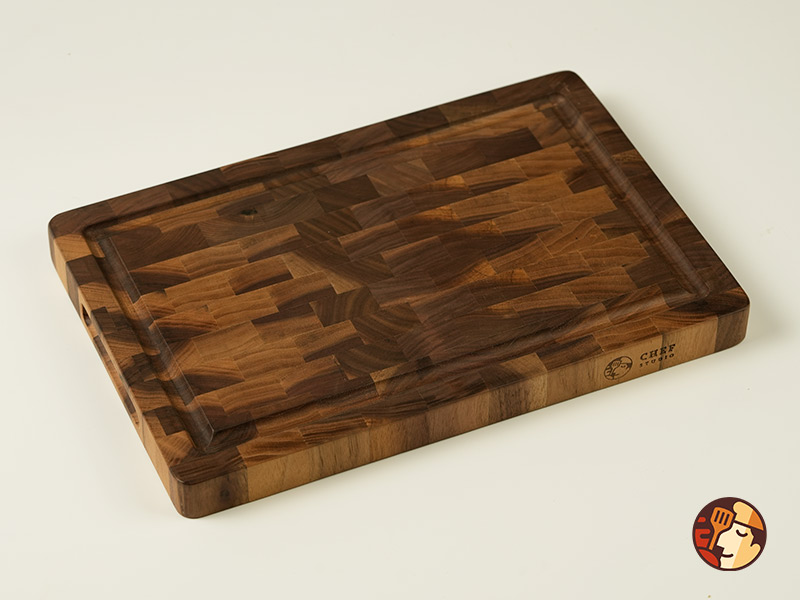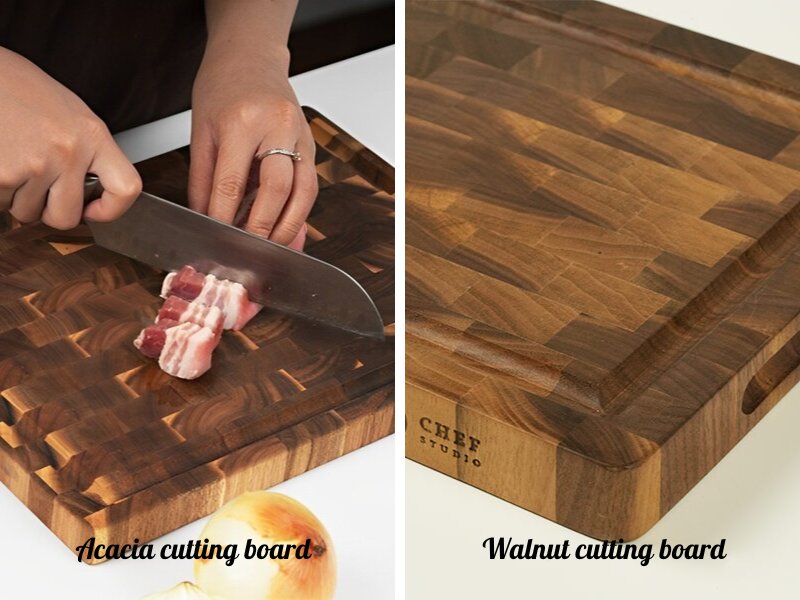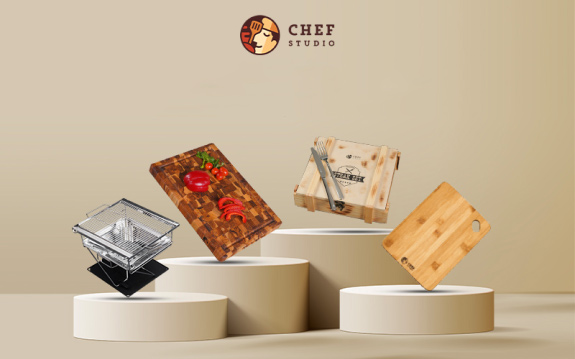Acacia vs walnut cutting board – Which is better?
When it comes to selecting the perfect cutting board for your kitchen, the choice between acacia and walnut can be a tough one. Both kinds of wood offer unique qualities that cater to various preferences and needs. In this comparison, Chef Studio will explore the characteristics of Acacia vs Walnut cutting boards to determine which one might be the better option for your culinary endeavors.
Acacia cutting board pros and cons
Acacia cutting boards have gained significant popularity among chefs and homeowners alike due to their numerous advantages. Before comparing acacia vs walnut cutting boards, let’s delve into the pros and cons of using acacia cutting boards:
Pros
- Durability: Acacia is a hardwood known for its strength and durability. This makes acacia cutting boards resistant to wear and tear, ensuring they last for years even with regular use.
- Aesthetic Appeal: One of the standout features of acacia wood is its stunning natural grain pattern. From light golden tones to rich reddish-brown hues, each acacia cutting board boasts a unique and elegant appearance, adding a touch of warmth to any kitchen.
- Water and Stain Resistance: Acacia wood naturally repels water and stains, making it an ideal choice for kitchen use. This moisture resistance ensures that the cutting board remains in good condition even after prolonged exposure to liquids.
- Environmental Friendliness: Acacia trees grow relatively fast compared to other hardwoods, making them a more sustainable option for cutting boards. Additionally, acacia can thrive in harsh climates, further enhancing its eco-friendly credentials.
- Easy Maintenance: Acacia cutting boards are easy to clean and maintain. Their natural resistance to microorganisms reduces the risk of bacterial growth, and regular cleaning with mild soap and water is usually sufficient to keep them in top condition.
Cons
- Cost: While acacia cutting boards offer numerous benefits, they tend to be more expensive than cutting boards made from other materials like plastic, bamboo, and glass.
- Irregular Grain: Some individuals may find the irregular grain pattern of acacia wood less appealing compared to other types of wood with more uniform grain patterns. However, this characteristic is often appreciated for its rustic charm by those who prefer a more natural look.
Walnut cutting board pros and cons
When it comes to selecting the perfect cutting board for your kitchen, the choice between an acacia vs walnut cutting board can be a tough decision. Each offers its own set of advantages and disadvantages. Let’s take a closer look at the pros and cons of walnut cutting boards to help you make an informed decision.
Pros
- Unique Grain and Appearance: Walnut cutting boards boast distinctive grain patterns and come in various shapes, adding a touch of luxury to your kitchen. The cream-colored surface contrasts beautifully with the dark chocolate heartwood, making walnut boards visually appealing.
- Durable and Hard: Walnut wood is renowned for its hardness, making it ideal for cutting boards. It can withstand years of use without wearing down, while still being gentle on knife edges.
- Color Evolution: Over time, walnut wood gradually lightens in color with use, maintaining its aesthetic appeal. This natural aging process ensures that your cutting board retains its beauty without dulling over time.
- High Durability: Walnut cutting boards are highly durable and resistant to decay, rot, and mold. They can withstand impacts and are not prone to warping, making them suitable for various environmental conditions.
- Moisture Resistance: Walnut is naturally resistant to moisture, ensuring that your cutting board remains in top condition for years without warping or cracking.
- Versatility: Walnut cutting boards are versatile and can be used for various food preparation tasks, including cutting, chopping, slicing, and serving.
- Aesthetic Appeal: Walnut wood exhibits changes in grain color under different lighting conditions, enhancing its visual appeal and making it a favorite among many.
Cons
- Cost: Walnut cutting boards tend to be more expensive than boards made from other wood varieties due to their durability and aesthetic appeal.
- Irregular Grain Pattern: Some individuals may prefer a more uniform grain pattern, which walnut wood may not always provide due to its natural characteristics.
Acacia vs walnut cutting board – Which is better?
When it comes to choosing the ideal cutting board for your kitchen, the choice often boils down to acacia vs walnut cutting boards. Let’s dive into the comparison between these two popular options:
Durability
The first factor to consider when comparing walnut vs acacia cutting boards is durability. Both acacia and walnut cutting boards are renowned for their durability. While both can withstand the rigors of daily use with proper care, acacia edges slightly ahead in terms of toughness and resistance to dents and scratches.
Acacia vs walnut hardness
Acacia boasts an impressive Janka hardness rating of over 1800, making it one of the toughest woods available for cutting boards. Conversely, walnut registers a rating of 1000, still relatively hard but more prone to knife marks than acacia.
Appearance
Acacia showcases a distinct reddish-brown hue, adding warmth and character to any kitchen. On the other hand, walnut exhibits a rich dark brown color with a straight and uniform grain pattern, exuding elegance and sophistication.
Care and Maintenance
Both acacia and walnut cutting boards require regular maintenance to prolong their lifespan and preserve their natural beauty. Acacia’s inherent resistance to bacteria and moisture simplifies the cleaning process, making it a low-maintenance option. However, both boards benefit from drying after each use and occasional oiling to prevent drying out and maintain their luster.
Sustainability
When considering acacia vs walnut cutting boards, the question of sustainability is frequently raised.
Acacia cutting board emerges as the more eco-friendly choice. Acacia trees grow rapidly and thrive in diverse climatic conditions, making them readily available and replenishable. Conversely, walnut is harvested from slower-growing trees that are less abundant, raising concerns about long-term sustainability.
Choosing the Right One
Ultimately, the decision between acacia vs walnut cutting boards hinges on personal preferences and priorities. If you prefer a reddish-brown board with exceptional durability, acacia is the way to go. Conversely, walnut is the ideal choice if you favor a dark brown board with a sophisticated aesthetic. Regardless of your selection, both acacia and walnut cutting boards offer durability, versatility, and moisture resistance, making them indispensable kitchen companions for any culinary enthusiast.
In conclusion, the decision between an acacia vs walnut cutting board ultimately boils down to personal preference and specific needs. Both types of cutting boards offer unique benefits and drawbacks. Whether you prioritize durability, aesthetics, or sustainability, carefully weighing the pros and cons of each option will help you determine which type of cutting board is best suited to your culinary needs.

